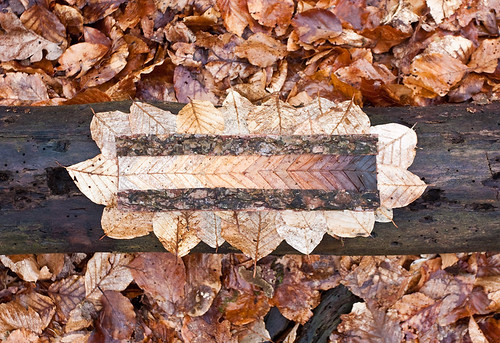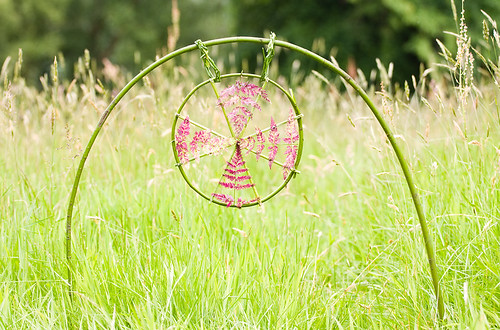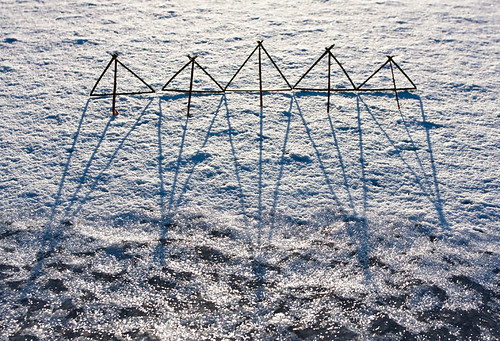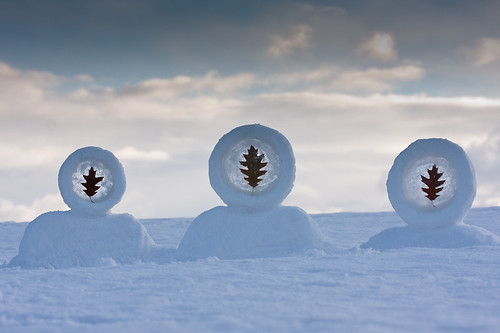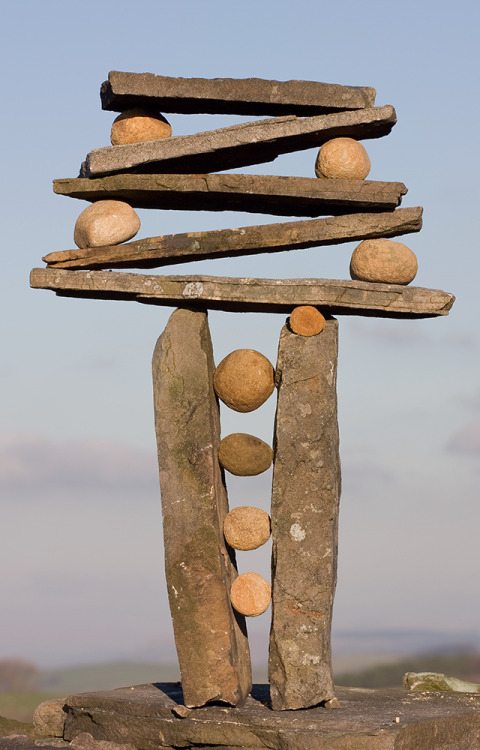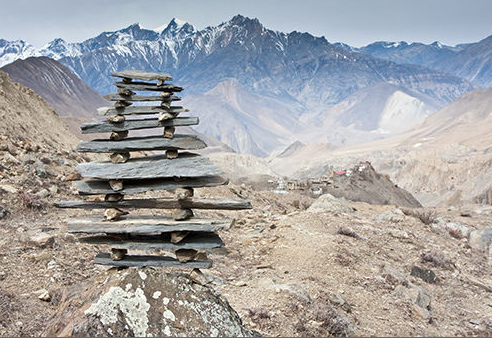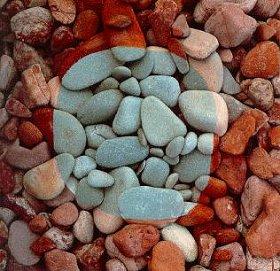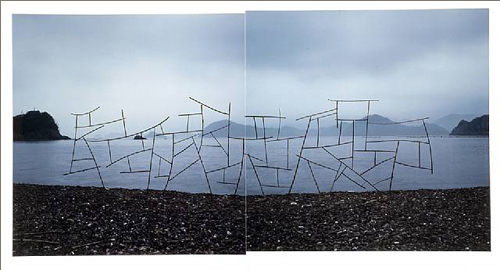http://www.chrisdrury.co.uk/home.htm
Wednesday, December 7, 2011
Friday, November 25, 2011
Water patterns
Last Sunday I went to the beach. I had an idea that I wanted to make something from the materials I found there. But when I got there I found that what interested me most was the running water making its way back to the ocean. I started to film it. Soon I found I was zooming right in, abstracting the movement of the water. It appeared at first to be chaotic; but under close observation, after a short while the water appeared to be moving in repetitive patterns. I was mesmerized by the screen. It was like watching chaos theory in motion. They're pretty beautiful in their own right too. Can't wait to project them in a space and see what it's like.
Anyway, I was looking at the installations from last summer on the Body and Soul website and found this video:
Sunshine Coast Art | Green focus for Floating Land art festival
I particularly like the Firings (kilns over the water). I would like to go to the beach and make floating pieces from wood and kindling to set alight and let out to sea and film their progression. I like the idea of watching water overwhelm the flames.
Sunday, November 20, 2011
James Turrell - Roden Crater Project
Roden is an extinct volcanic cinder cone near Arizona’s Painted Desert and the Grand Canyon which Turrell is turning into a naked eye observatory. It will evoke the sublime by linking visitors with the celestial movements of planets, stars and distant galaxies. Turrell has looked closely at the design of ancient observatories, and is also interested in qualities of light and space. Instead of creating land art which leaves a mark upon nature, he has created a viewing space which emphasizes the beauty, grandeur and theatrical qualities of celestial events and affirms our prevailing fascination with them.
-> Roden Crater Project
-> Roden Crater Project
Richard Shilling
Richard Shilling is a land artist very influenced by Andy Goldsworthy. Like Goldsworthy, he uses ephemeral natural materials such as leaves and twigs
He also uses ice, often mixing it with use of leaves
He explores balance with stone constructions
Richard Shilling's website:
http://www.richardshilling.co.uk/
He explores balance with stone constructions
Richard Shilling's website:
Andy Goldsworthy
Andy Goldsworthy is a British land artist who works with a variety of natural materials. Much of his work is ephemeral, made with natural materials which will quickly decay, such as with his leaf pieces:


Maple leaf line, let to flow downstream (I had an idea to do this, and then realised Goldsworthy did it first!):
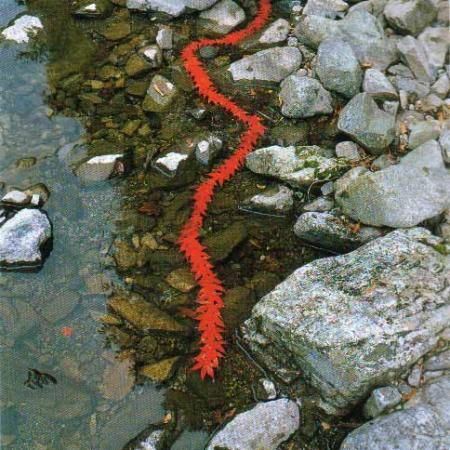
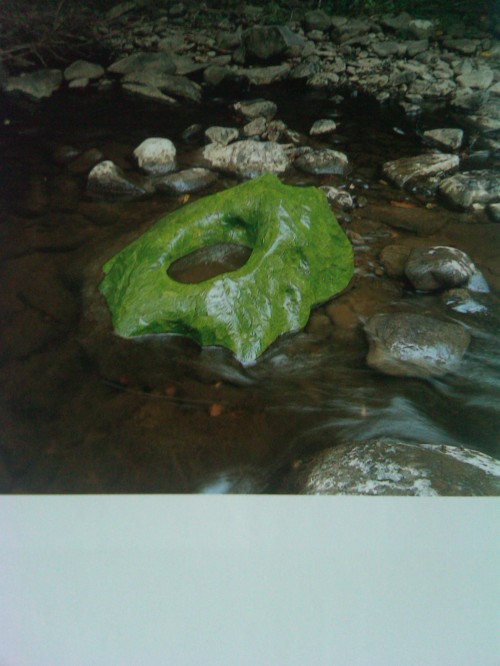


Goldsworthy also works with stone, playing with colour...
Goldsworthy often uses combinations of materials, juxtaposing materials that will have different lifespans. The rock will remain long after the sticks have decayed.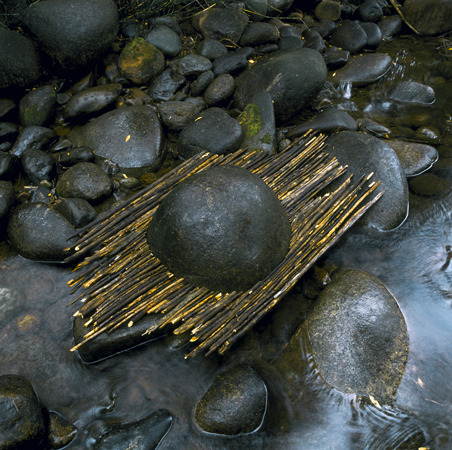
 He has made spires in wood
He has made spires in wood

and ice.

 A large focus of Goldsworthy's work is the influence of time. Usually it creates a process of transformation through decay. Goldsworthy has documented the melting of snowballs, which seem to embody a fluid sculptural process.
A large focus of Goldsworthy's work is the influence of time. Usually it creates a process of transformation through decay. Goldsworthy has documented the melting of snowballs, which seem to embody a fluid sculptural process.
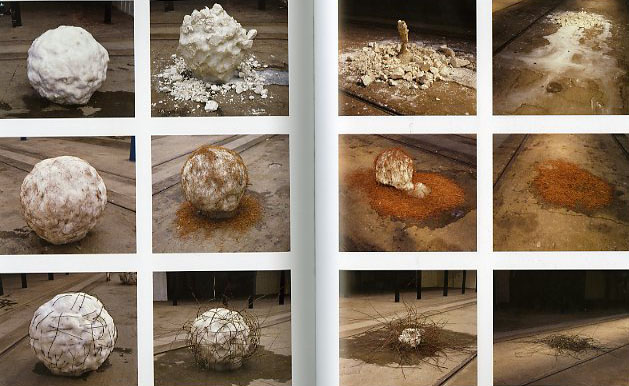
Goldsworthy has also created a series of melted "drawings" on paper, created by the marks left behind by giant snowballs melting onto the page.




Goldsworthy also works with stone, playing with colour...
Goldsworthy often uses combinations of materials, juxtaposing materials that will have different lifespans. The rock will remain long after the sticks have decayed.

Goldsworthy also uses sticks to make screens, inside and outside the gallery setting.
 He has made spires in wood
He has made spires in wood

and ice.

 A large focus of Goldsworthy's work is the influence of time. Usually it creates a process of transformation through decay. Goldsworthy has documented the melting of snowballs, which seem to embody a fluid sculptural process.
A large focus of Goldsworthy's work is the influence of time. Usually it creates a process of transformation through decay. Goldsworthy has documented the melting of snowballs, which seem to embody a fluid sculptural process.
Goldsworthy has also created a series of melted "drawings" on paper, created by the marks left behind by giant snowballs melting onto the page.
Subscribe to:
Posts (Atom)








